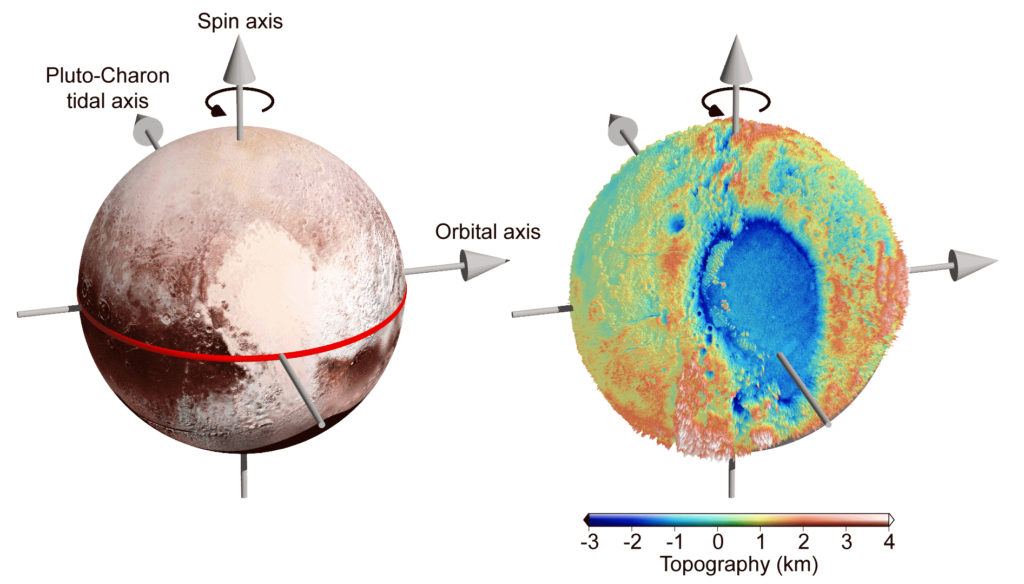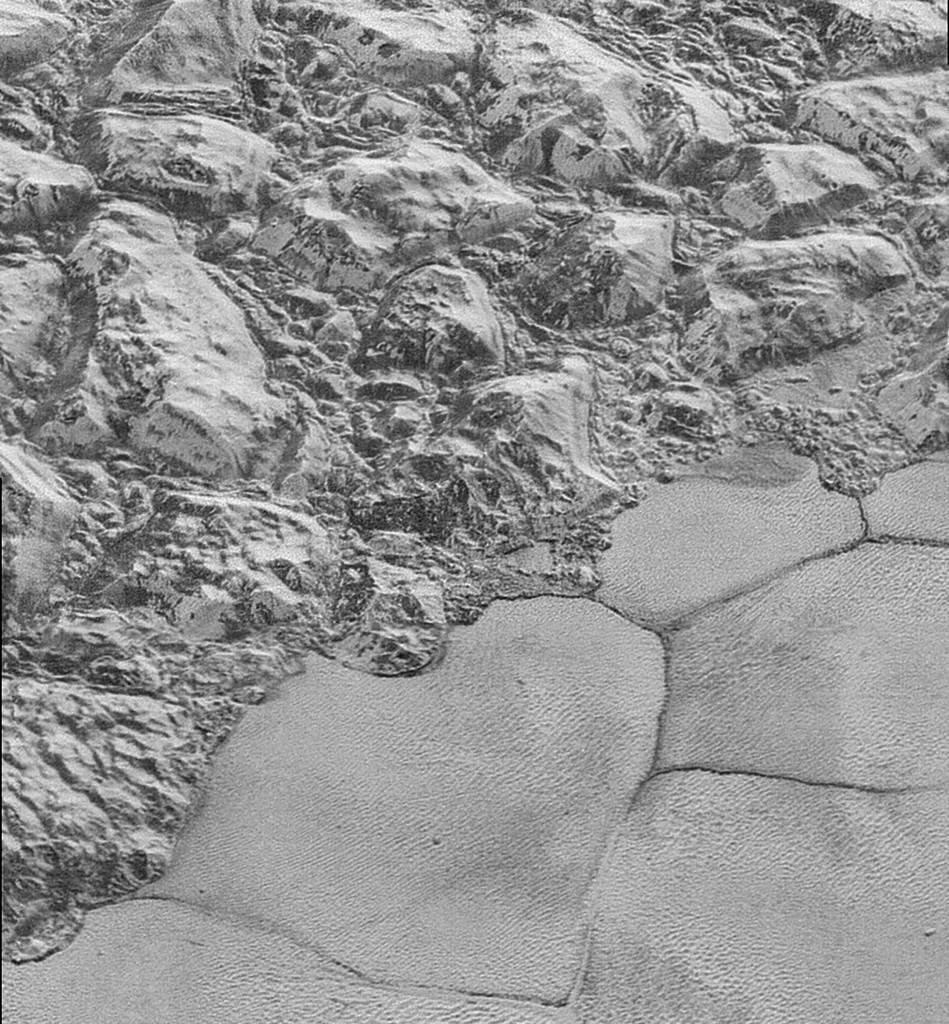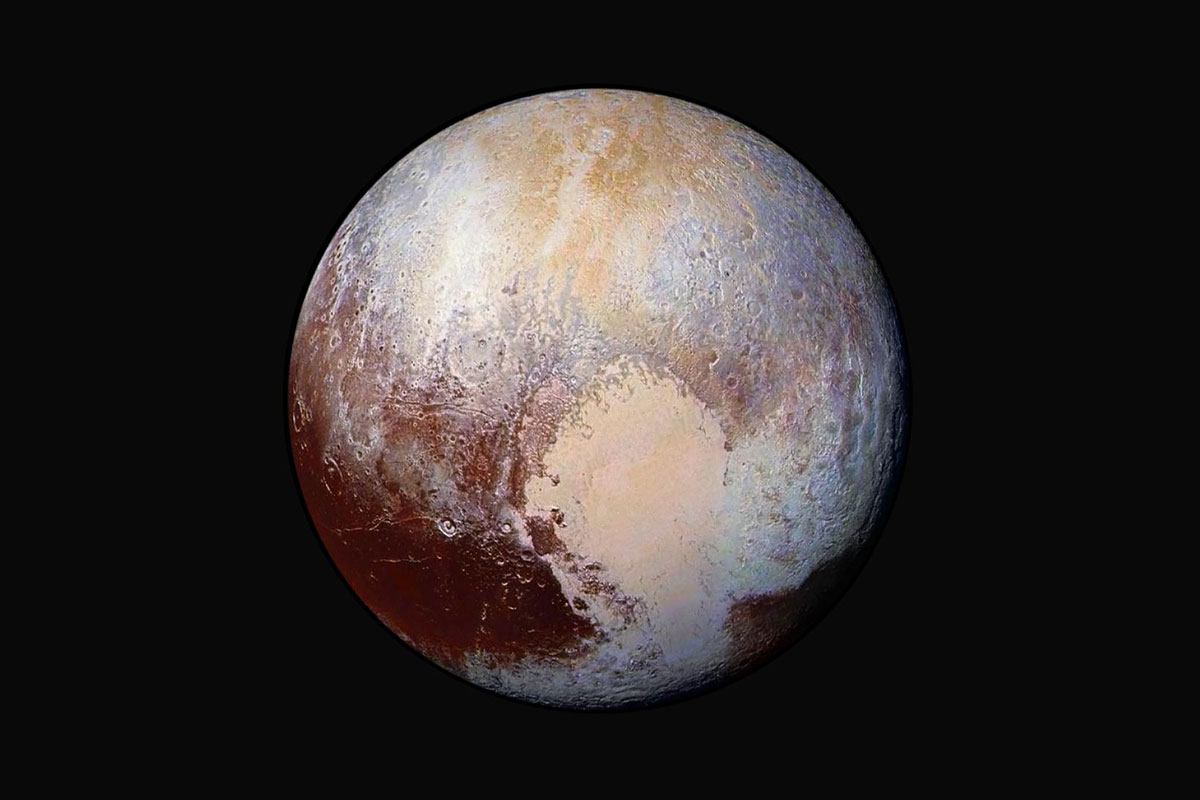In July of 2015, NASA’s New Horizons mission made history by becoming the first spacecraft to ever conduct a flyby with Pluto. In addition to providing the world with the first up-close images of this distant world, New Horizons‘ suite of scientific instruments also provided scientists with a wealth of information about Pluto – including its surface features, composition, and atmosphere.
The images the spacecraft took of the surface also revealed unexpected features like the basin named Sputnik Planitia – which scientists saw as an indication of a subsurface ocean. In a new study led by researchers from the University of Hokkaido, the presence of a thin layer of clathrate hydrates at the base of Pluto’s ice shell would ensure that this world could support an ocean.
These findings were shared in a study recently published in Nature Geosciences. The study was led by Shunichi Kamata, a researcher from the Creative Research Institution at Hokkaido University, and included members from the Tokyo Institute of Technology, the University of California Santa Cruz, Tokushima University, Osaka University, and Kobe University.

Is Pluto an “Ocean World“?
To break it down, the location and topography of Sputnik Planitia suggest that there is likely a subsurface ocean beneath Pluto’s crust, which is thinned around this basin. However, the existence of this ocean is inconsistent with the age of the dwarf planet, which is believed to have formed at about the same time as the other planets in the Solar System (between 4.46 and 4.6 billion years ago).
In that time, any subsurface ocean would surely have frozen and the inner surface of the ice shell facing the ocean would have flattened as well. Addressing this inconsistency, the team considered what could keep a subsurface ocean on Pluto in a liquid state while also ensuring that the ice shell’s inner surface remained frozen and uneven.
They then theorized that an “insulating layer” of gas hydrates would account for this – which are crystalline, ice-like molecules of gas that are trapped within frozen water molecules. These types of molecules have low thermal conductivity and therefore could provide insulating properties. To test this theory, the team ran a series of computer simulations that attempted to model the thermal and structural evolution of Pluto’s interior.
The team simulated two scenarios, one which included an insulating layer and one which did not, that covered a timescale reaching back to the formation of the Solar System (ca. 4.6 billion years ago). What they found was that without a gas hydrate layer, a subsurface sea in Pluto would have completely frozen hundreds of millions of years ago. But with a layer of gas hydrates providing insulation, it would remain predominantly liquid.

More Chances to Find Life?
As Kamata indicated in a recent Hokkaido University press release, these findings bolster the case for “ocean worlds” research, which aims to find evidence of life in interior oceans. “This could mean there are more oceans in the universe than previously thought, making the existence of extraterrestrial life more plausible,” he said.
They further determined that without a layer, it would take about one million years for a uniformly thick ice crust to completely form over the ocean. With a gas hydrate insulating layer, though, it would take more than one billion years. These simulations thus support the possibility that beneath Sputnik Planitia, there is a massive ocean of liquid water.
The possible existence of a gas hydrate insulating layer beneath its surface could have implications that reach far beyond Pluto. On moon’s like Callisto, Mimas, Titan, Triton, and Ceres, long-lived subsurface oceans may also exist. Unlike Europa, Ganymede and Enceladus, these bodies may lack enough heat in their interior to maintain oceans, either because of a lack of geothermal activity or their distance from the Sun.
Granted, the odds that there is microbial life (or something more complicated) beneath the icy surface of every large moon in the Solar System are not good by any stretch. But knowing that there are more moons out there that could have subsurface oceans increases the odds of finding life inside at least one of them.
Further Reading: Hokkaido University, Nature Geoscience

